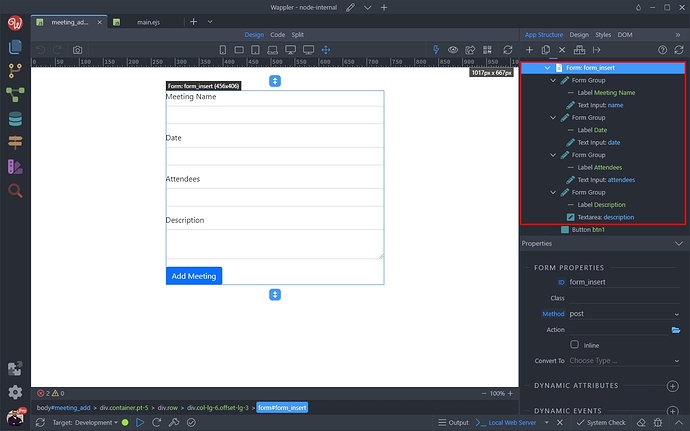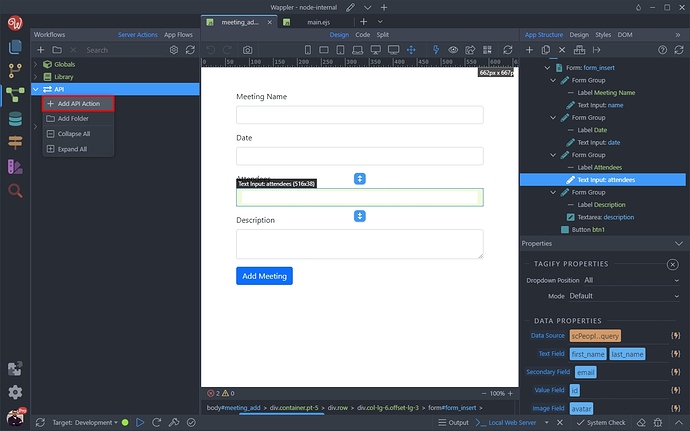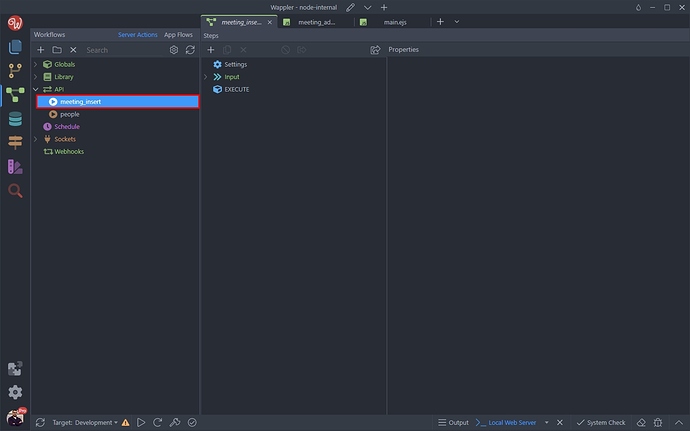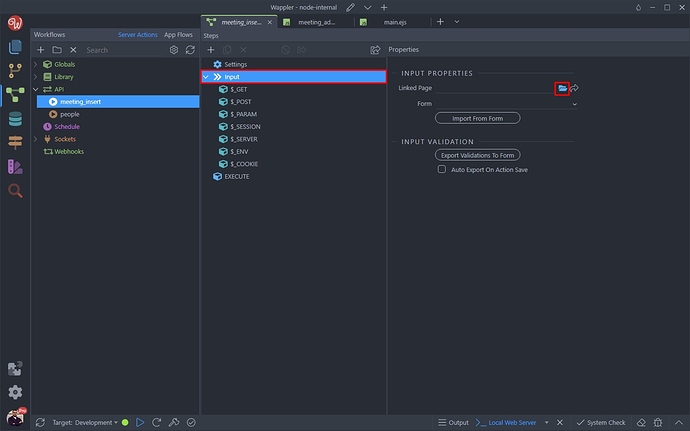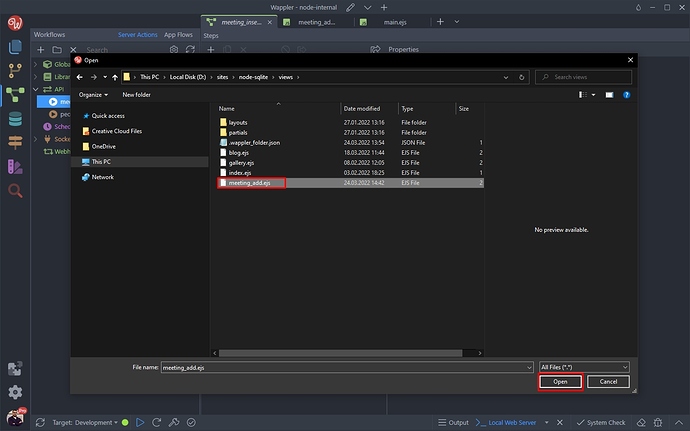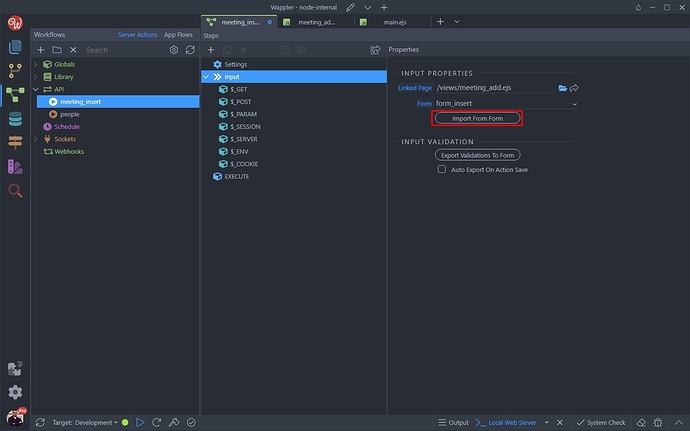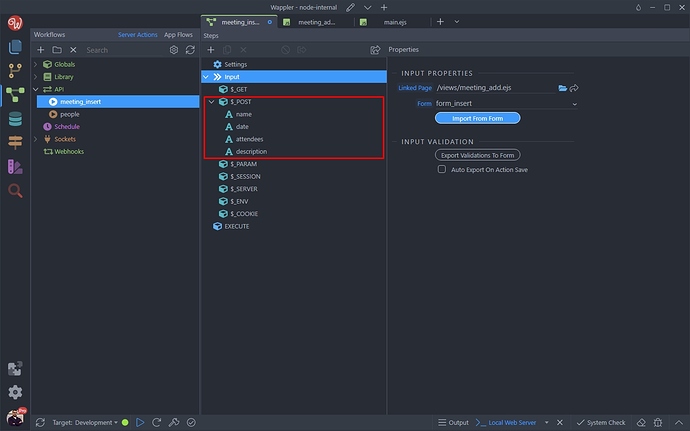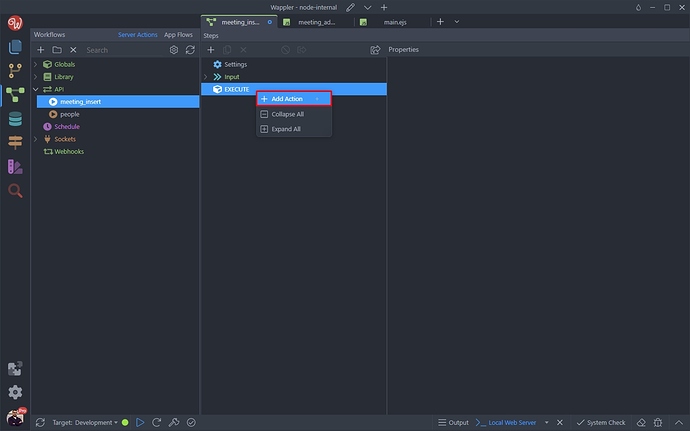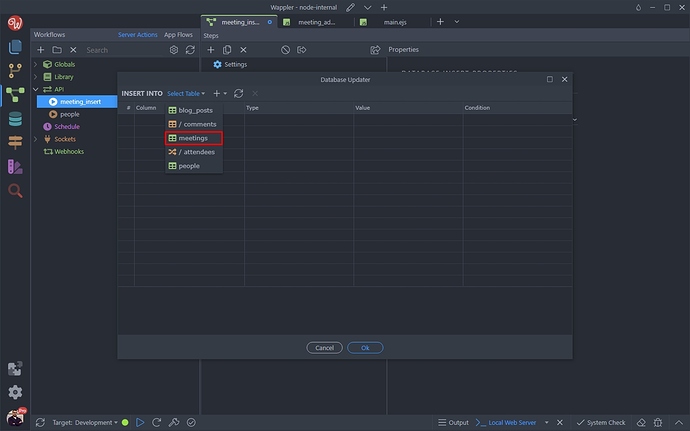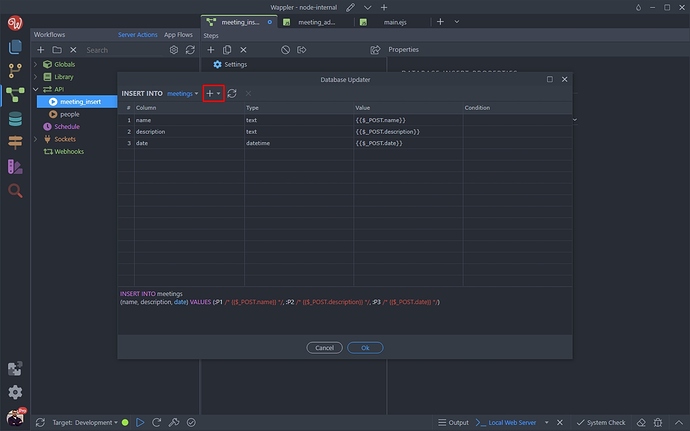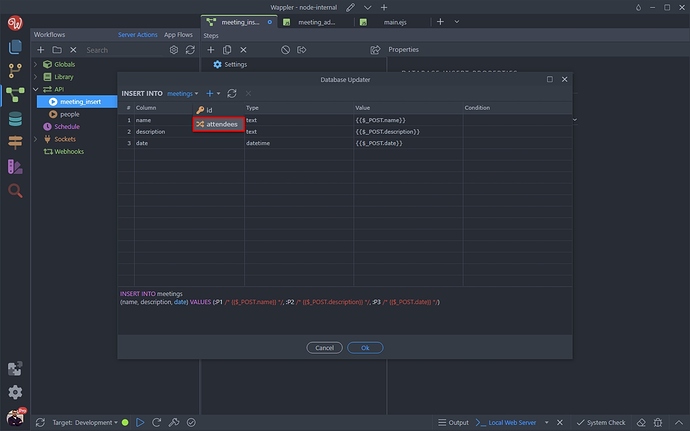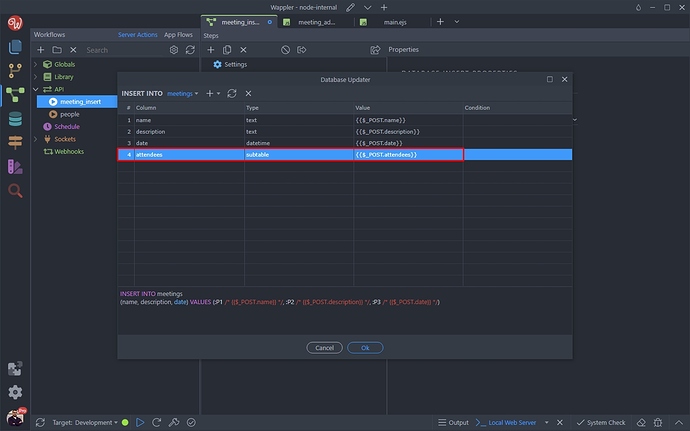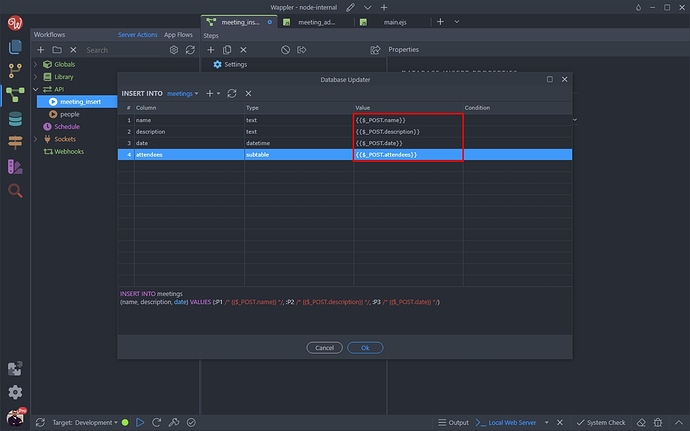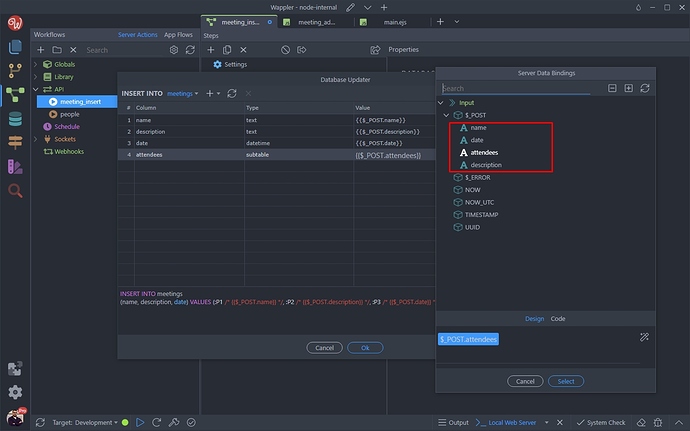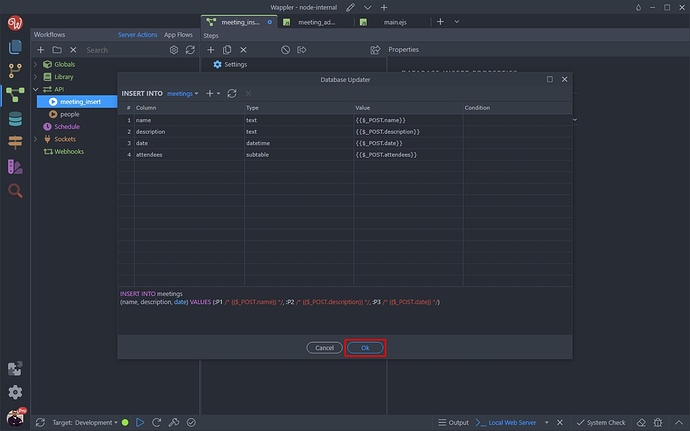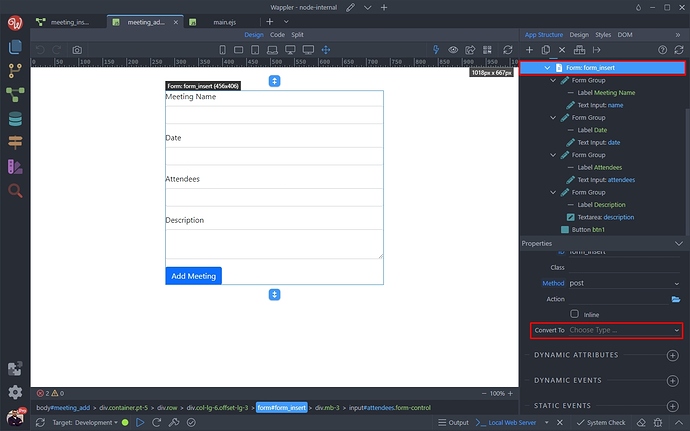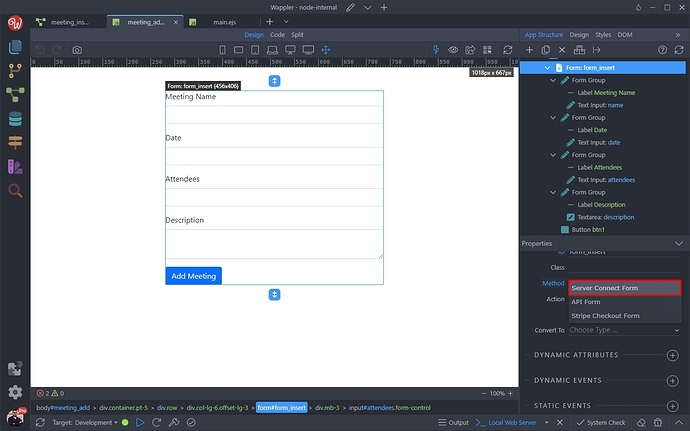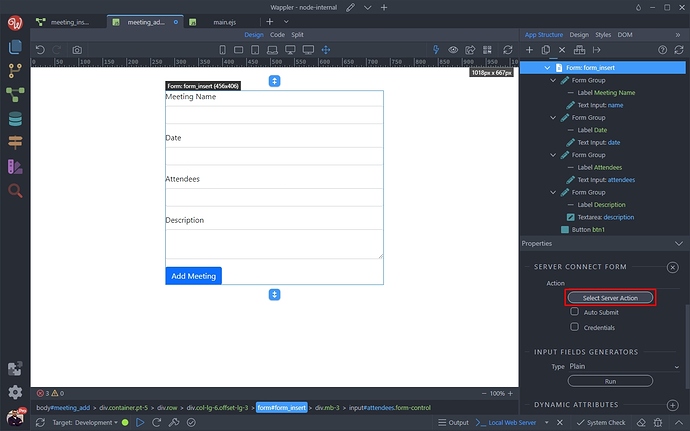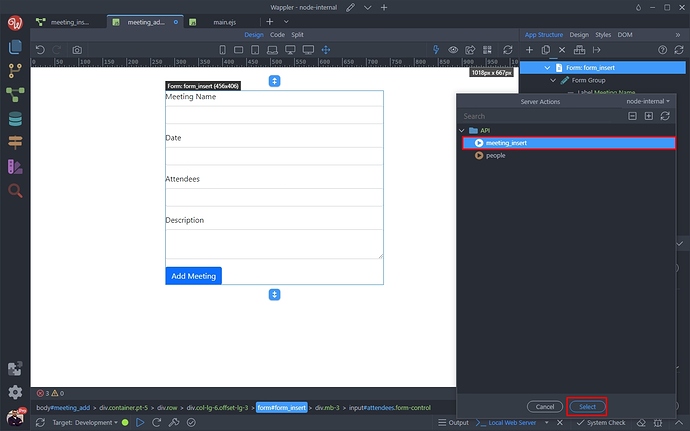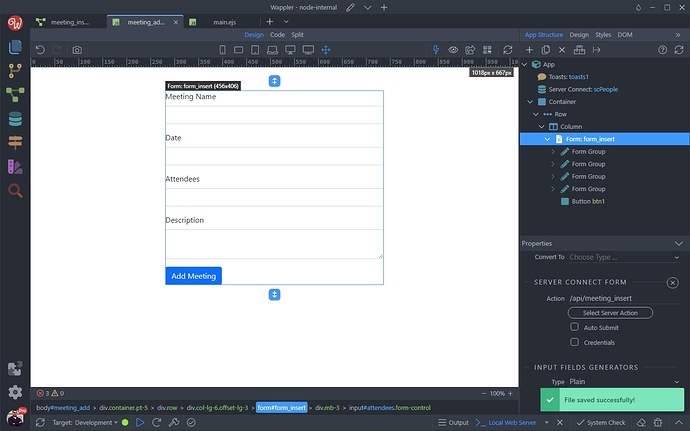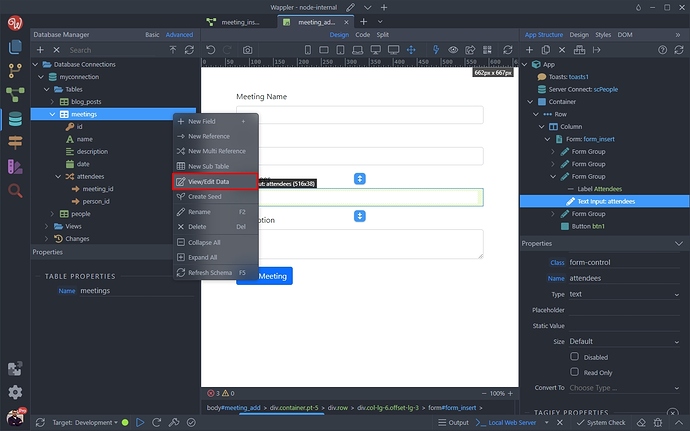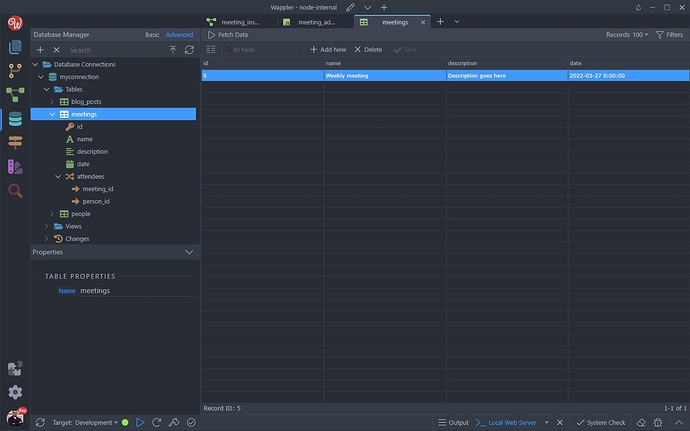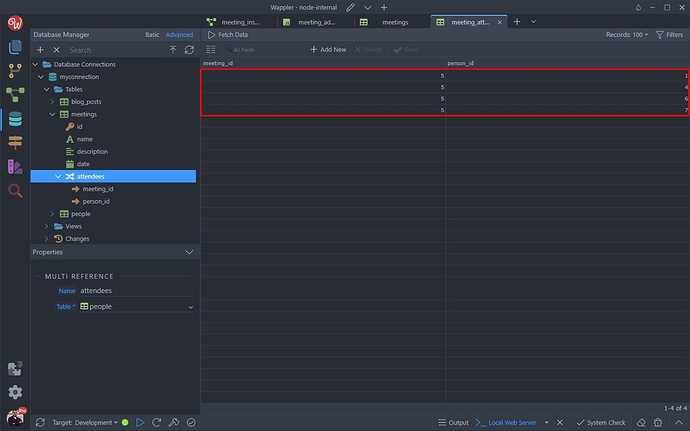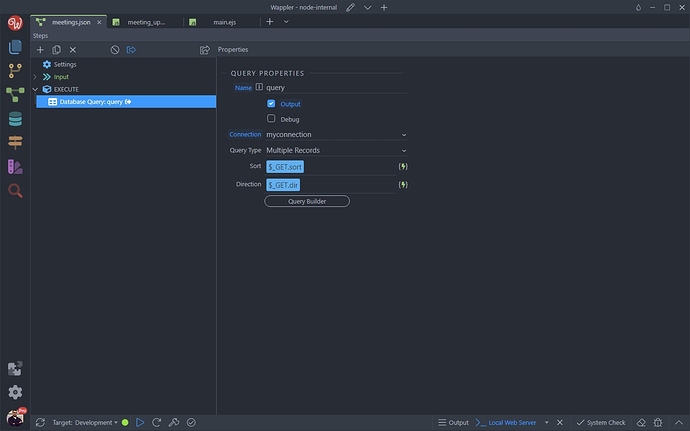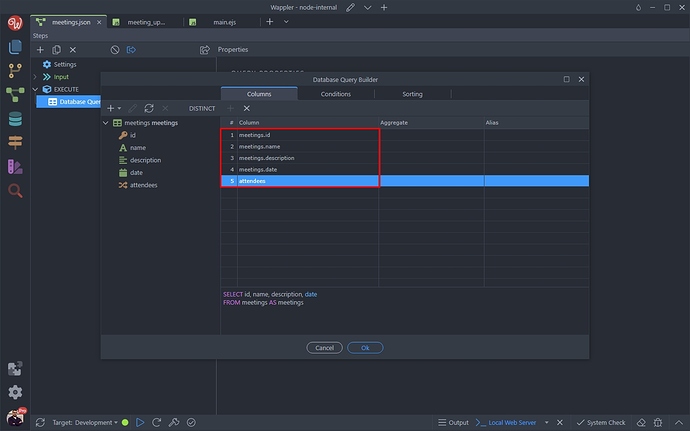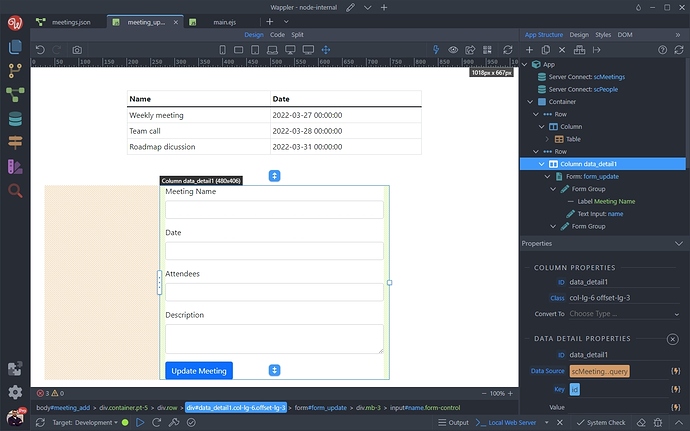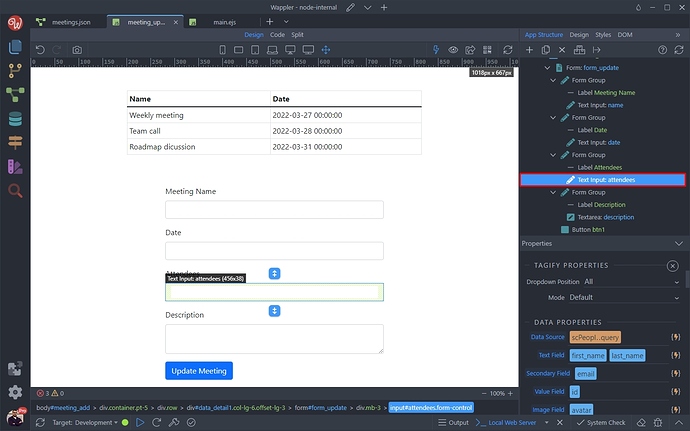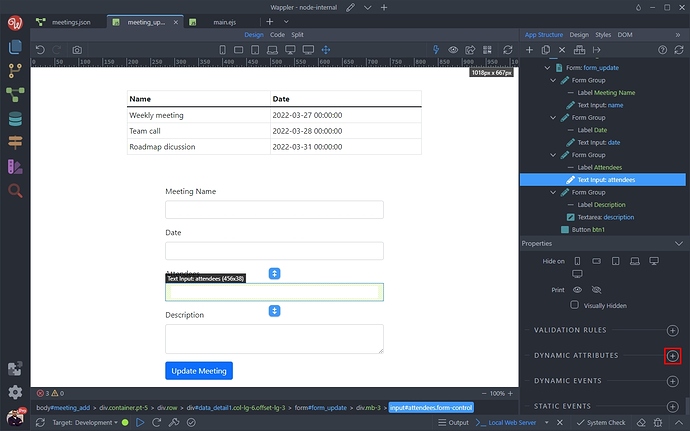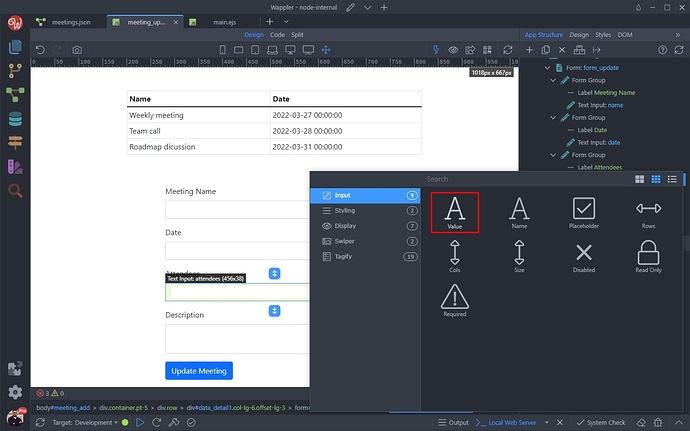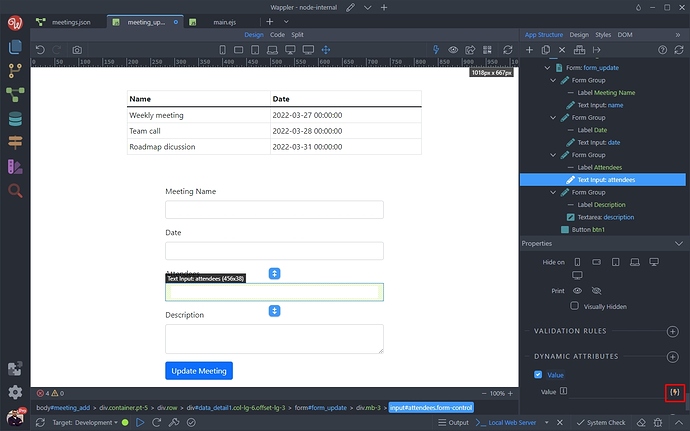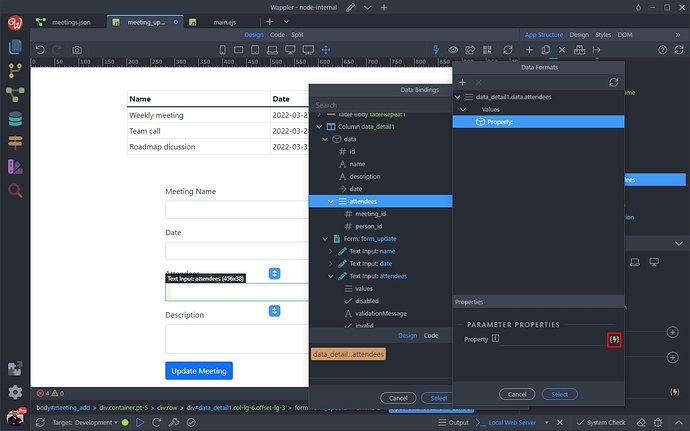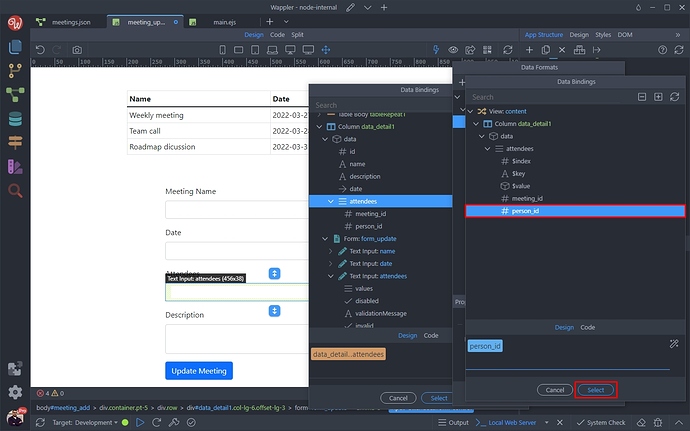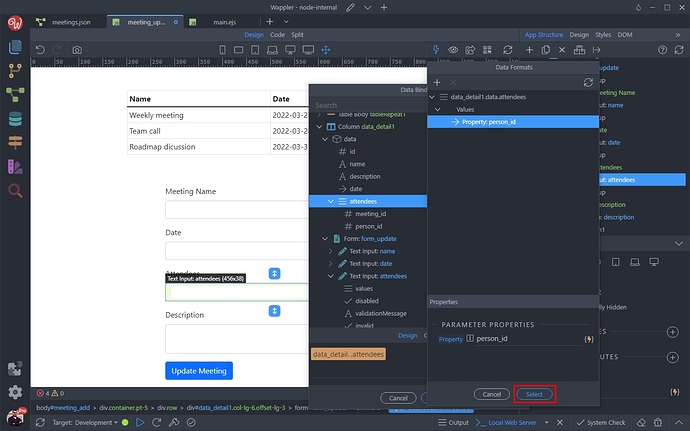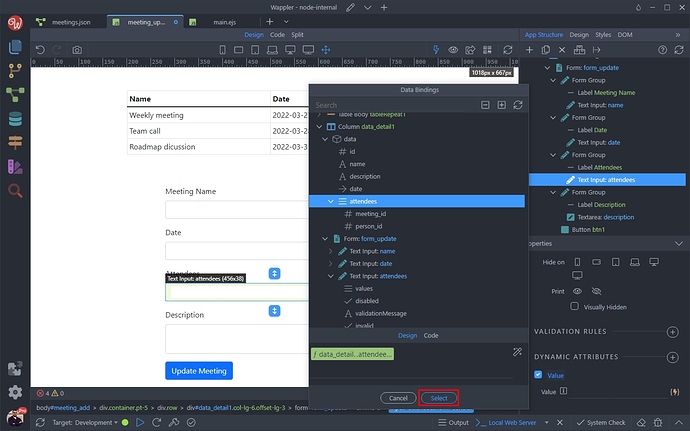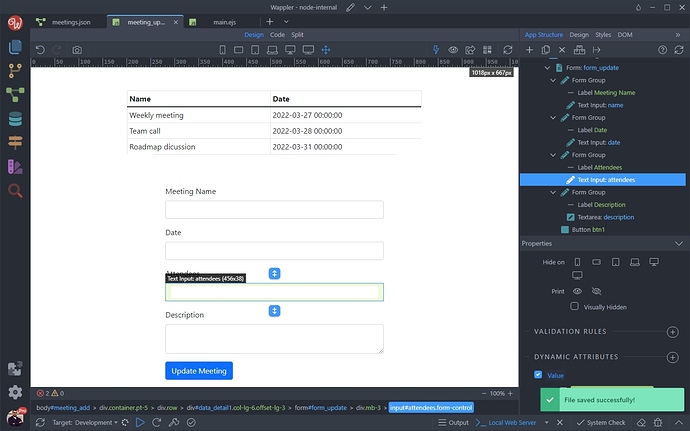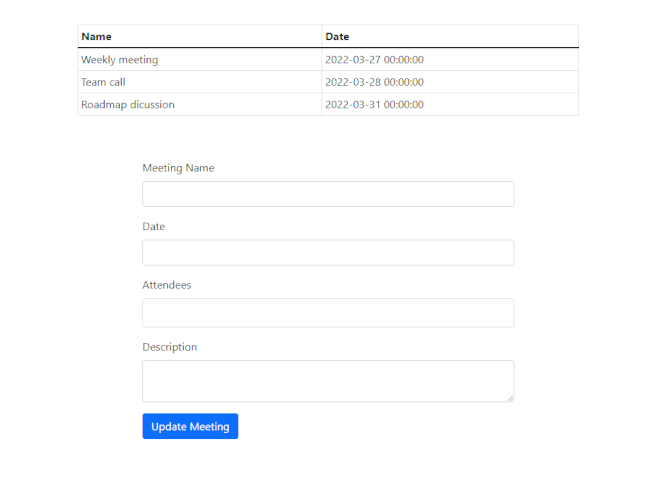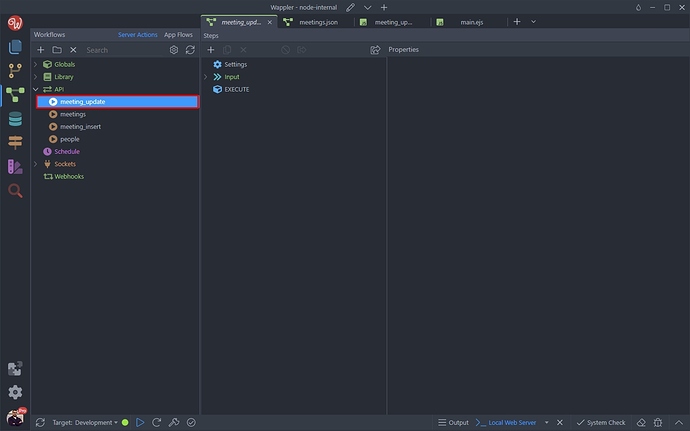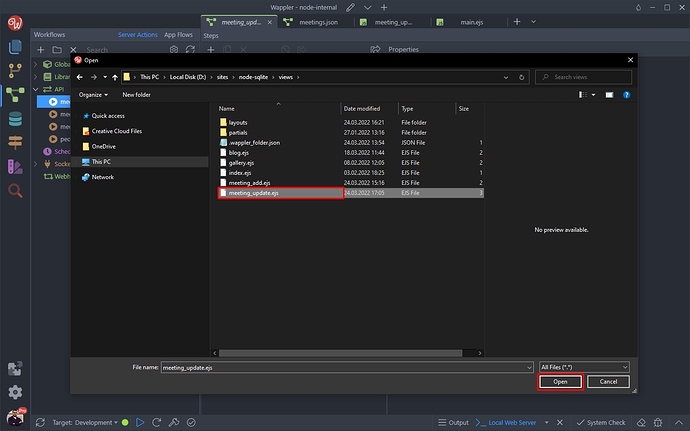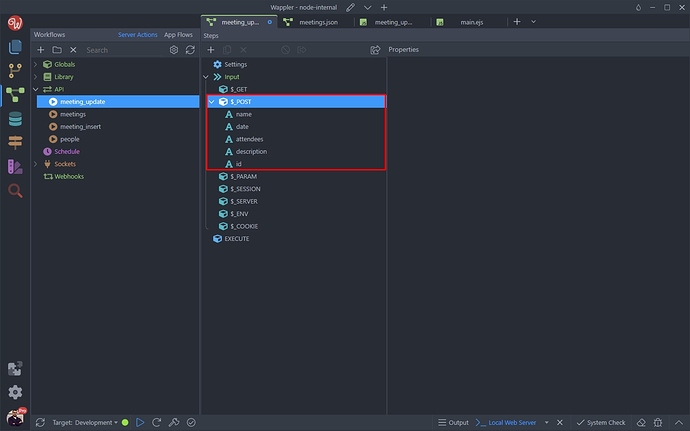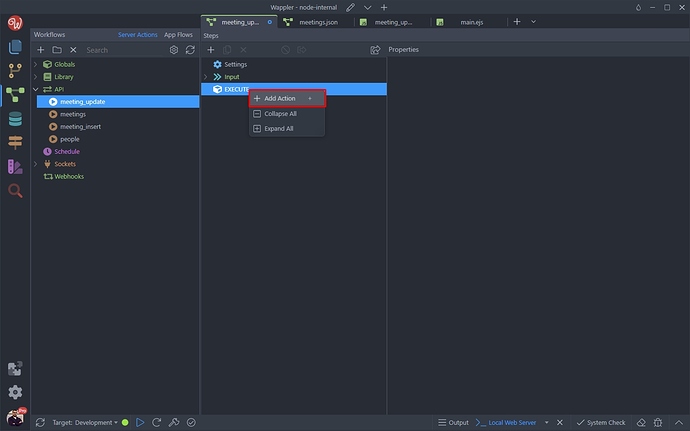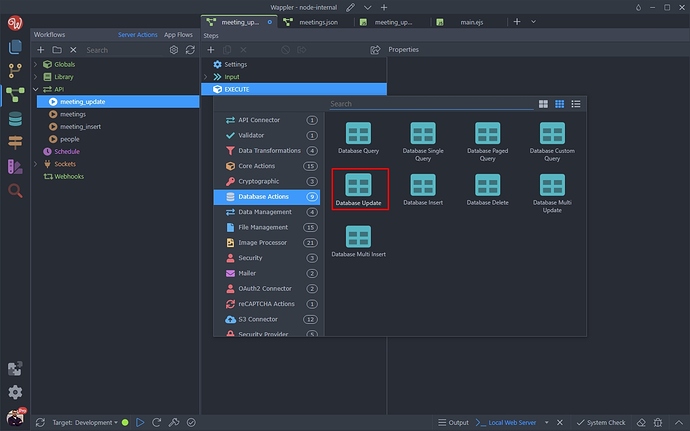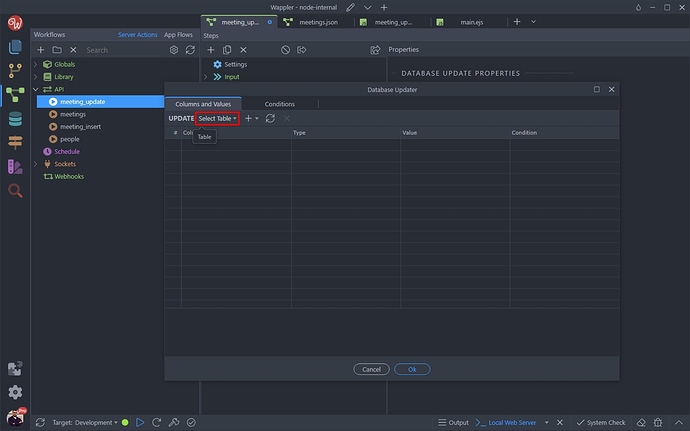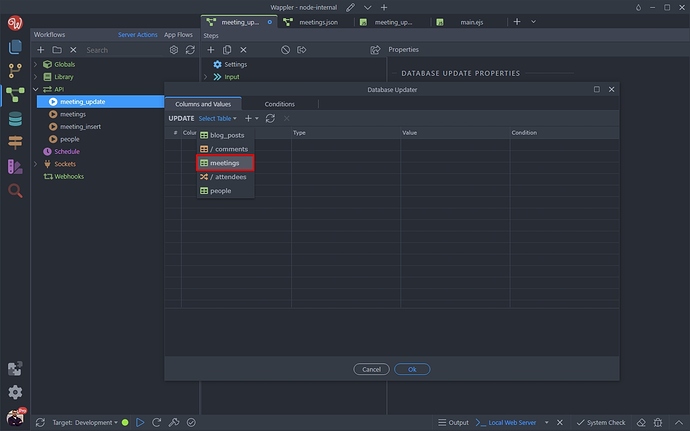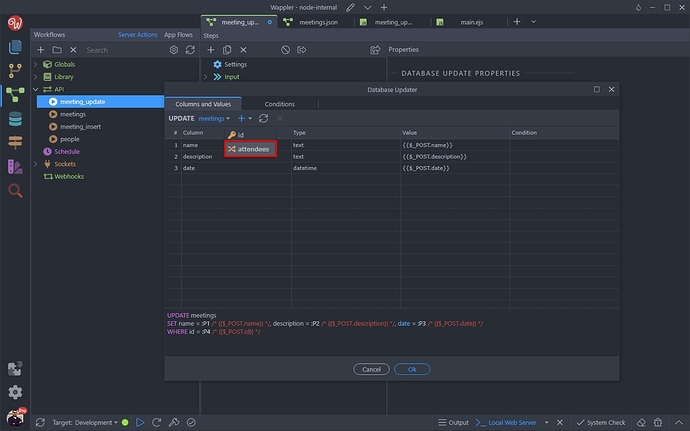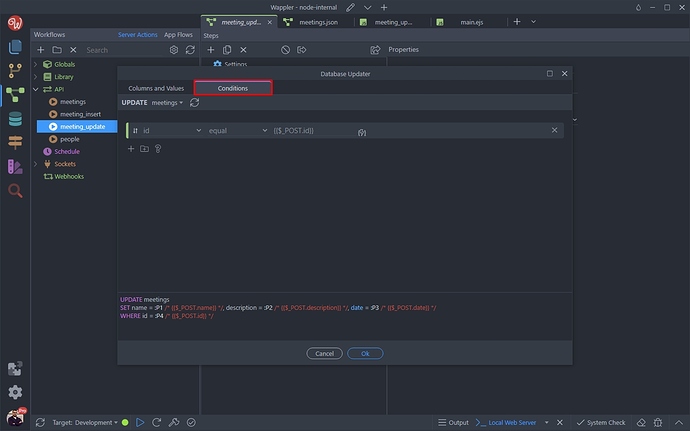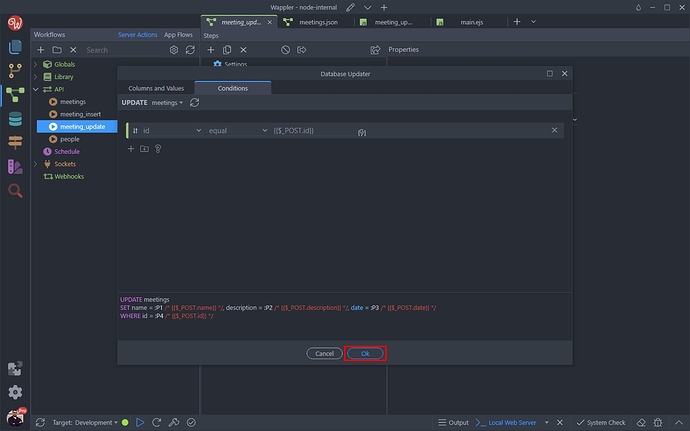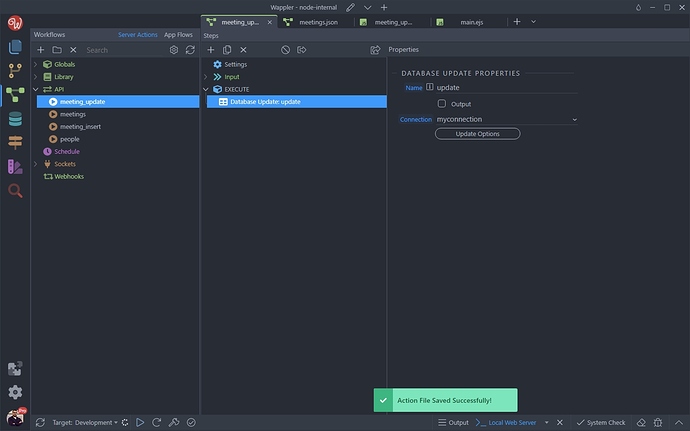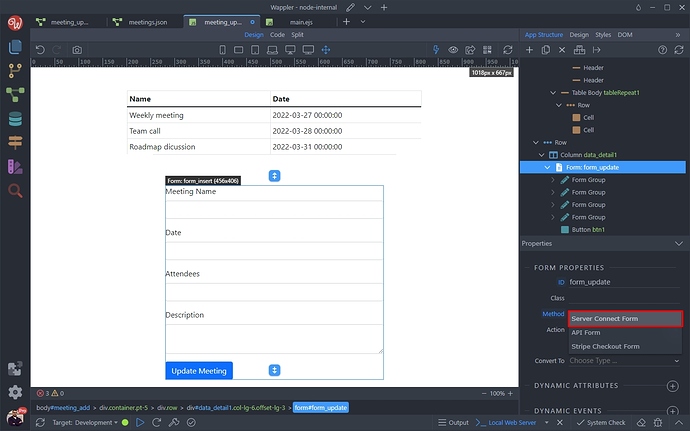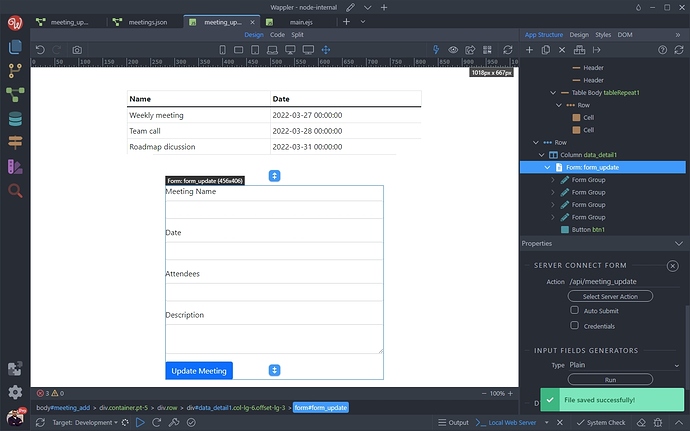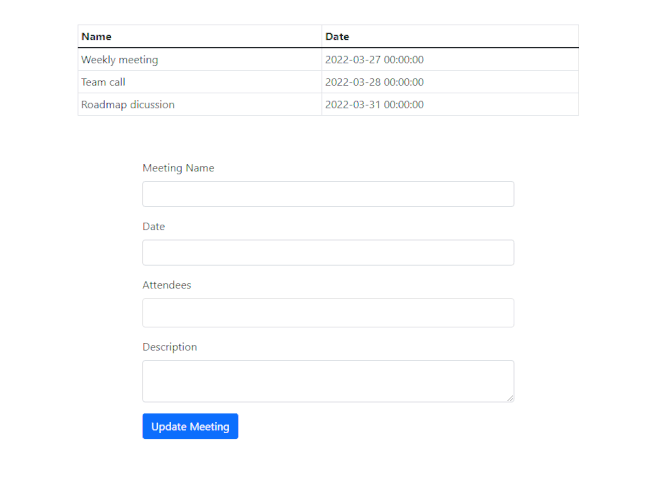Using Tagify with Multi References
Intro
Thanks to the multi reference support in Wappler you can easily insert and update your data based on many-to-many relations.
In our example we created two tables and connected them with multi reference. Now we will show you how to insert and update the data in these tables and in the related junction table, with the help of the Tagify component.
Inserting Data
We will show you how to create a meeting and insert multiple attendees per meeting with a single insert record step.
Insert Page Overview
On our page we added a form with several inputs - name, date, attendees and description:
The attendees field is a dynamic Tagify input, which gets people from our people database table through a simple database query. We are using the primary key of the people table as a value for it:
That’s pretty much all on our page. We will return later to it.
Insert API Action
Open the Server Connect panel and add a new API Action:
We call it meeting_insert:
Let’s import the inputs from our insert form. Select Input and click the browse icon for the Linked Page option:
Browse to your page, containing the form and select it:
Then select the form from the dropdown and click the Import button:
Our form inputs have been imported under $_POST. We will use them to pass the form data to the insert step:
Close the input section and add a new action:
Select Database Insert from the Database Actions category:
And click the Insert Options button:
Open the tables dropdown and select a table to insert the data into. We want to create a new meeting, so we select the meetings table:
You can see the table fields are now listed in the insert options. We would also like to insert the attendees for the meeting, so click the Add Column button:
And add the attendees sub table from the dropdown:
You can see in in the insert columns list:
Make sure to select the $_POST variables (form inputs) corresponding for each of the database table columns:
For the attendees subtable we are using the Tagify input value:
Click OK when you are done:
Save your API Action:
And we are done with the server-side part.
Insert Form
Switch back to the insert page, select your form and open the Convert To menu:
Select Server Connect Form:
And select a Server Action for it:
We select the meeting_insert server action, which we just created:
Then add some dynamic events - like form reset on success, show a success notification etc. - whatever you need here. Save your page and you are done:
Insert Results
Let’s fill the form, select attendees using the Tagify component and submit the form:
Let’s check what has been inserted in our database. Open the Database Manager and right click the meetings table:
Select View/Edit Data:
And you can see the meeting info we entered in the form has been inserted:
What about the attendees? We can see them the same way - by right clicking the attendees sub table and selecting View/Edit Data:
You can see the 4 attendees we selected are inserted and they are all related to the same meeting id - the one we just inserted in the meetings table:
So that’s how to insert data, when using many-to-many relations and multi references.
Updating Data
Data Source
Following this tutorial: Using Nested Queries with the Database Query Builder we created a server action called meetings:
with a database query step inside, which returns our meetings and the attendees sub table using a single database query:
We use this query on the update record page to get the data and display it in the update record form.
Update Page Overview
On the page we have a standard setup for an update record page - a list (table) listing the records from the database - in our case the meetings:
and also a data detail component, which is used to populate update record form with the selected record data:
Both of these are using the server action called meetings which we mentioned above.
As usual we store the selected record ID in a hidden field in the form.
Our form inputs, have dynamic values which come from the data detail component - nothing unusual for a standard update record page/form:
We are using the Tagify component in this form, to select the users and add them to a meeting. We also need to add a dynamic value to it, so that it displays the attendees for the selected meeting from our database.
Select the Tagify input:
Add new dynamic attribute:
Select Input > Value:
And click the dynamic data picker icon:
Select the attendees array, returned by the data detail region, then click the data formatter button:
The data for the Tagify components needs to be formatted, so that an array with only the attendees IDs is being returned. Right click the expression, and under the Collections category select Values:
Select the dynamic data picker button to select which property to return:
And pick the person_id:
Click Select:
And then click Select to apply the formatting to the expression:
Save your page:
And let’s preview the results.
You can see the attendees are being loaded in the update record form, as well as the rest of the data for the selected meeting:
Update API Action
The next step is to setup the update record API Action.
Open the server connect panel and create a new API Action:
We call it meeting_update:
Now let’s import our form inputs.
Select Input and click the browse button for the Linked Page option:
Browse to your page an select it:
Then select the form from the dropdown and click Import:
This imports the form inputs:
Close the Input section and add new action:
Select Database Update in the Database Actions category:
Then open the Update Options:
Open the table dropdown and select the table, which you want to update:
This is the meetings table:
You can see the table fields have been imported. We also want to update the attendees so we need to add the attendees sub table. Open the add column dropdown:
And select the attendees sub table:
Make sure to select the form inputs corresponding to each of the database fields.
For the attendees sub table we select the Tagify input:
Click the Conditions tab:
And select your hidden form input, returning the selected record ID:
Click OK when you are done:
Then save your API Action:
Update Form
Switch back to the update page, select your form and open the Convert To menu:
Select Server Connect Form:
And select a Server Action for it:
We select the meeting_update server action, which we just created:
Then add some dynamic events - like reload data on success, show a success notification etc. - whatever you need here. Save your page and you are done:
Results
You can select a record, update any of its info including the attendees using the Tagify component and save it:
The data for the attendees will be updated and the records deleted or added in the junction table - all done automatically in a single update action!
